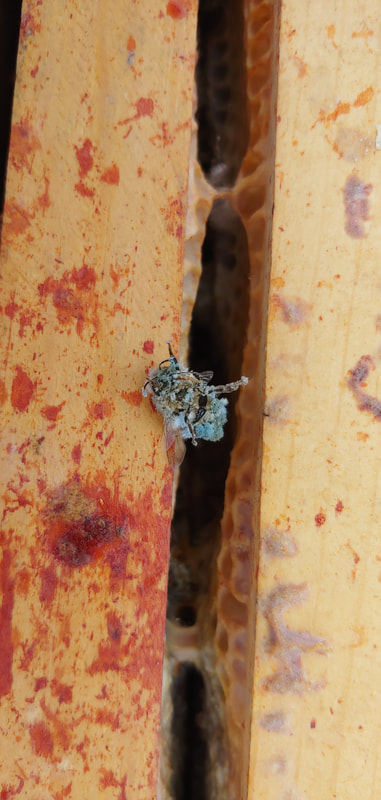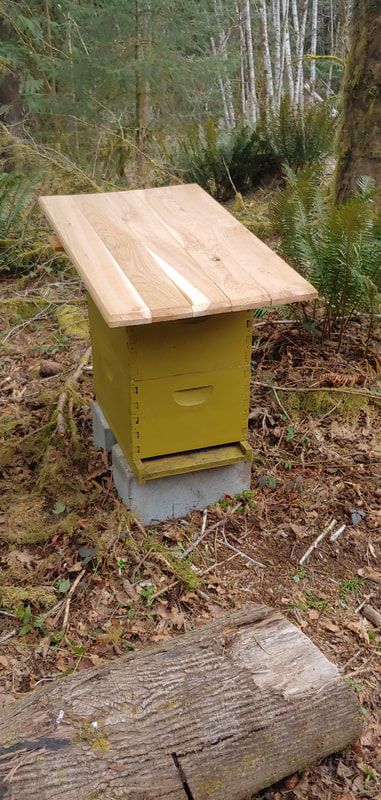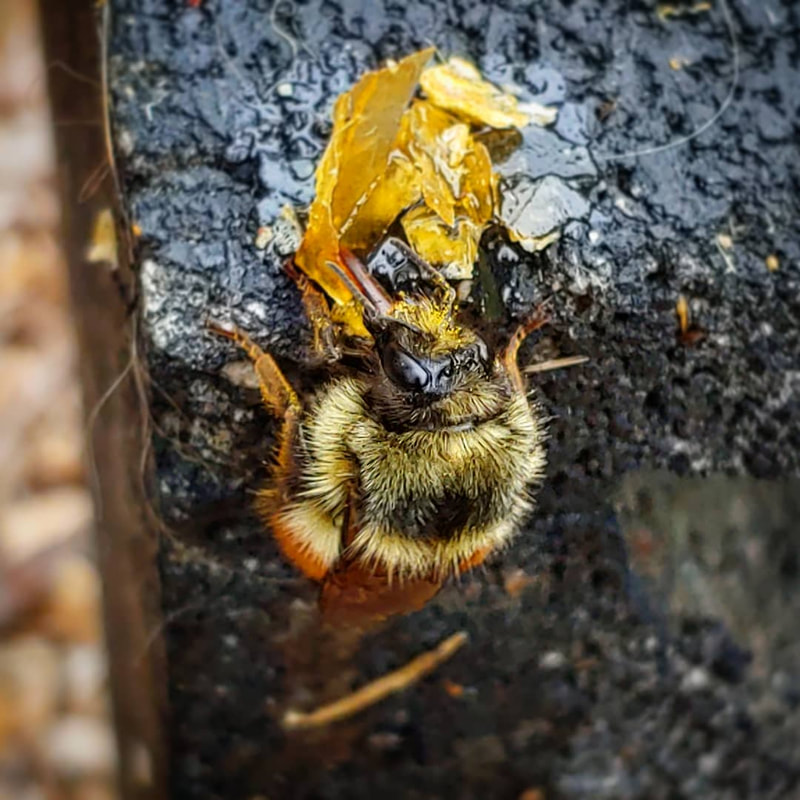I wanted to use organic treatment options, and some reports were stating that varroa mites were developing resistance to the common Apivar treatment. I decided I would go with Apivar mite treatment for the hive's first year, then switch to herb oil deterrents, and a hop derived treatment the next spring if they survived the winter.
Sadly... they did not survive. I don't know why. They had plenty of honey, I inserted a tight cedar entrance limiter, there was a good group of nurse bees, and a dense comb arrangement. The photos above mostly show the aftermath. The queen died there in that cluster of nurses. The mold most likely developed after the bees died and stopped cleaning it. Maybe it was the varroa damage, maybe I didn't vent enough, maybe moisture and mold overtook their efforts. Either way, they didn't make it to spring. They did leave behind two gallons of incredible honey, and lots of wax to work with. After cleaning and harvesting the honey from the frames, I set them outside in the open boxes for the native bees and other insects to pick even cleaner. The fuzzy one in the photo at the bottom is one of the native bumblers licking honey out of some comb. I had built a simple cedar rain roof that sat snuggly over the aluminum covered Langstroth hive lid. I had also planned a cedar winter box, that would house and insulate the Langstroth boxes during future winters. Unfortunately, I did not get the opportunity to try again. I did however learn a lot from the experience, and perhaps will get the chance to try again, or help someone else in their keeping. Until then, enjoy the pictures, and don't make the mistakes I made. NR
0 Comments
Leave a Reply. |
Nicholas RodriguezArtist, designer, musician, writer, craftsman, nature geek... Archives
March 2024
Categories
All
|















 RSS Feed
RSS Feed